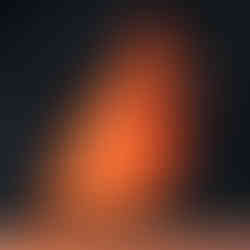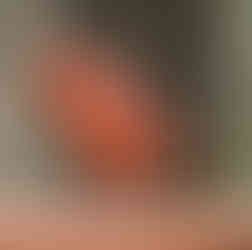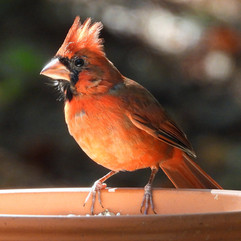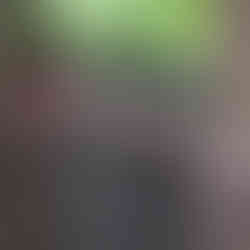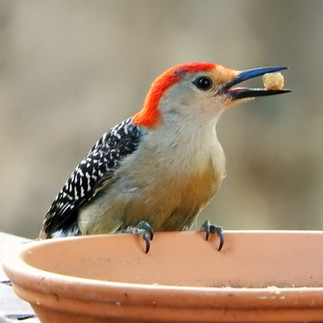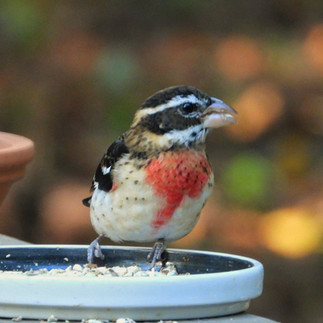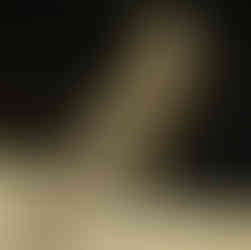In this blog, we attempt to answer the question "What is that red bird on my bird feeder?" Please keep in mind this blog is based in the Southeastern United States (Birds of West Cobb is located in Marietta, Georgia)

What are the most common Red Birds to see at your bird feeder in the Southeast?
Here in the Southeastern United States, you are most likely to see one of these 7 birds which are very red, or somewhat red. There are a few species here that you might not expect! In the order of "most red" to "least red" here they are:
Northern Cardinal
House Finch
Purple Finch
Red-headed Woodpecker
Scarlet Tanager
Red-bellied Woodpecker
Rose-breasted Grosbeak
The Male Northern Cardinal is very likely to be the most common Red Bird visiting your bird feeders in the South.
Probably the most popular as well, Northern Cardinals are usually the answer to the question "What is that red bird on my bird feeder?" They are gorgeous birds without a question, but only the Male's feathers are bright red, and they will be brightest in Spring and Summer months! Did you know that Cardinals generally do NOT migrate? They will stay in the same area year-round and don't seem to mind the seasons changing! Here is another interesting fact for you: Cardinals are the official state bird of 7 different states! (Illinois, Indiana, Kentucky, North Carolina, Ohio, Virginia and West Virginia). While the male is typically bright red with a bit of black around the beak and eyes, the female is usually brown with an orange/red beak. Here are some photos for you of the male and female Northern Cardinal to help you identify them on your feeders!
The Male House Finch will likely be your second most common Red Bird to see at your bird feeders
House Finches are extremely common on feeders in the Southeast, but they were actually native to the Western United States originally and spread throughout the country. They often build nests inside of hanging plants, or in retail store sign lettering. You may even here them singing a a happy "Cheap cheap cheap" call when they are nearby in trees or shrubbery. While they are generally not a species that migrates in the Winter, you may see more than usual in Winter as some of the Northern Birds will migrate. Similar to the Northern Cardinal, the House Finch male is typically the red bird of the pair, and the female is usually quite plain in appearance. Here are some photos for you of the House Finches:
The Male Purple Finch is another Red Bird that you can expect to see at your Bird Feeders in the Southeast.
Most typically they will pass through, or spend the Winter in the South, so you'll be most likely to spot them in Fall or Early Spring Migratory periods. It looks similar to the House finch but does appear more Purple than red in some lighting! I've heard from several people that they were pretty confident they'd seen Purple Finches on their feeders here in the Metro-Atlanta area. For us though, it's really not very common. We usually see the House Finches (above) far more often and only see the Purple Finches (shown below) in early Spring when they are likely migrating back to their Summer homes. They appear slightly larger than House Finches and the coloration spreads to their wings and down their bellies to their tales as well. it is also, as the name suggests, purple instead of red. (although it is fairly close to red!)

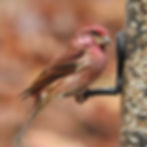
Red-headed Woodpeckers (Male & Female) is another bird with lots of Red coloration that you can expect to see on your bird feeders.
This photo was captured in Duluth, Georgia at my parent's home. They've had a nesting couple nearby for years and there is almost always one at the feeder visiting while I am spending time with my parents. The male and female BOTH have the completely red head, it is truly wonderful to see with the bright contrasting white and black on the wings, breast and head.

Red-bellied Woodpeckers (Male & Female) are very common birds with Red head and belly feathers, which you can expect to see at your bird feeders.
The Red-Bellied woodpeckers are favorites of ours. The male has a full-red patch extending from his shoulders all the way to just before the beak. The female has red in the same area, but it is broken up with a patch of warm grey between the back of the head and the beak. In the right lighting (and viewing angles) you can also see the hint of red on the bellies that they are so well known for!
The Male Rose-breasted Grosbeaks have an incredibly contrasting Red, black and white pattern. These are also migratory birds for most of the South, but always a treat to spot on the feeders!
The coloration differences between the male and female are basically completely opposite sides of the spectrum. The male (shown below in most photos) is bright red, black and white while the female is brown (multiple shades) and white. You may not even recognize her until you see a male along with her. The colors on the male sure are impressive to witness!
Scarlet Tanager (Spring/Summer Plumage = Red, Winter Plumage - Not red!)
The Scarlet Tanager will typically be seen in Georgia and around the Southeast during migration, where the majority of the red has turned to Yellow for Winter months. In this photo (below) you can still see the hints of red on the chin as well as on the belly! In Spring they will be entirely red and black with white accents on the wings and tail!

What are the best bird seed options for attracting these types of Red birds to my feeder?
Black Oil Sunflower Seed
This is one of our top picks for a large variety of backyard birds. You'll find anything from House Finches and Cardinals to the migratory Grosbeaks feasting on this seed type. It's readily available in many stores and you can buy it in bulk to save money as well! We've found that the shell-removed or "hulled" sunflower cuts way down on the mess below the feeders though, and strongly recommend this over the complete sunflower seed options. Here is a link to some on Amazon so you can give it a try! Hulled Sunflower Seed 10lb bag
Safflower Seed
This is probably our favorite seed type for attracting Red Birds or any other seed-eating birds. The seeds themselves are slightly smaller than Sunflower or Black-oil Sunflower seeds, and typically squirrels do not find them as appetizing. (Over time they will change their mind though if food is scarce). The seed is an off-white color and it makes for some great photographic captures! Here is a link so you can purchase a 10lb bag of Safflower Seed
Seed mixtures
Seed mixtures can be purchased and as long as they cover the types above you will do very well to attract a large variety of birds, including red birds, to your backyard bird feeders. Some seed mixtures will contain a large percentage of filler or "millet" seed, which is largely going to fall out of the feeders and onto the ground which attracts rodents. For that reason, we try to avoid the millet and go with something like this "Special Feeder Mix" from Cole's Bird Seed. We have had incredible results with it in the past few years!






